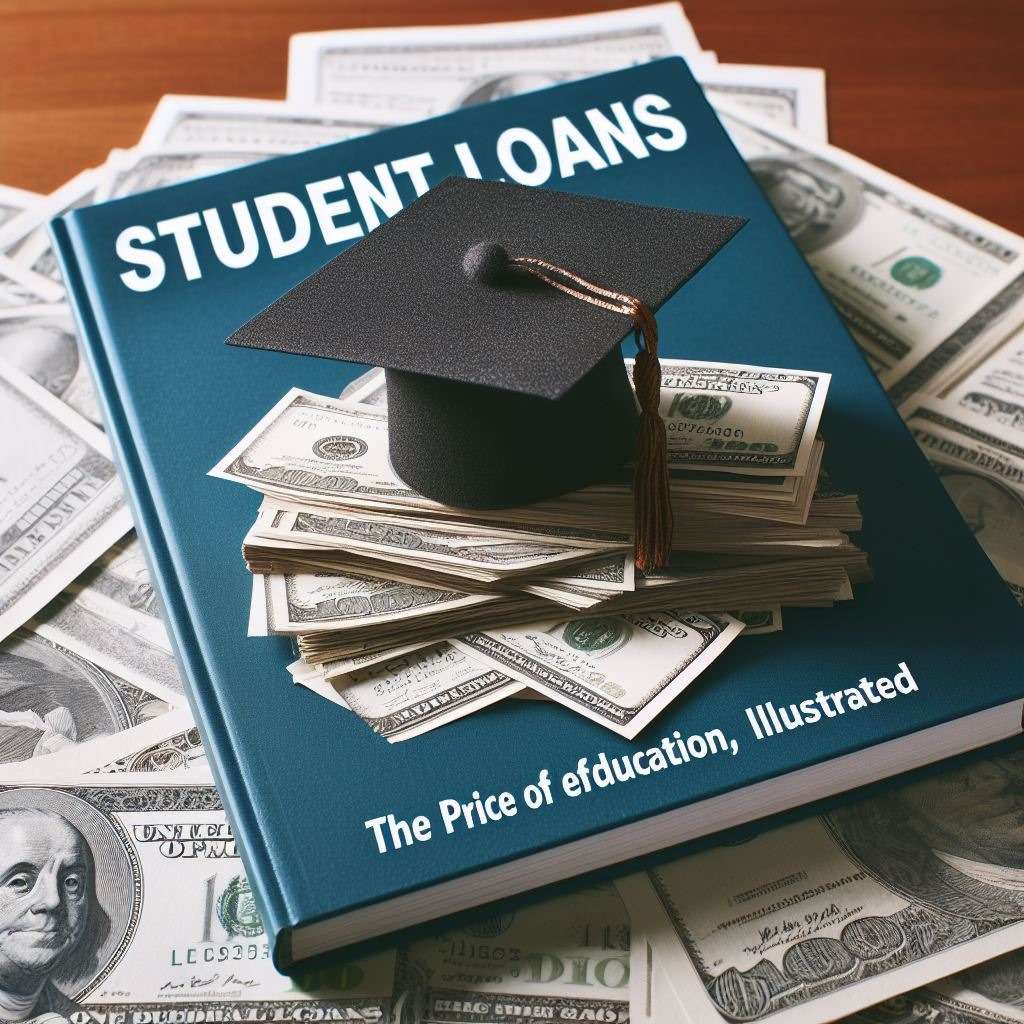Student Loan in Bangladesh
In Bangladesh, student loans are financial aids provided to students to support their higher education expenses. These loans play a crucial role in enabling students from various socio-economic backgrounds to pursue their academic goals and fulfill their career aspirations. They serve as a bridge between students’ financial constraints and their educational dreams, ensuring that deserving individuals have equal access to quality education.
What is a student loan and why is it necessary?
Overview of the Student Loan Scenario in Bangladesh
The student loan scenario in Bangladesh has witnessed significant growth in recent years, with both the government and financial institutions actively participating in providing loans. As education costs continue to rise, these loans have become essential to ensure that students do not face financial hardships while striving for academic excellence. The availability of student loans has helped thousands of students in Bangladesh pursue their education without worrying about immediate financial burdens.
Government Initiatives and Policies
The government of Bangladesh recognizes the key role that education plays in the development of the nation. As a result, it has implemented various initiatives and policies to promote student loans and facilitate access to higher education. The government collaborates with financial institutions to provide loans at favorable interest rates, assisting students in pursuing their desired courses and programs. Additionally, the government has laid out clear guidelines and eligibility criteria to ensure fairness and equal opportunities for all students seeking financial assistance.
Types of Student Loans in Bangladesh
Government-sponsored Student Loans
1. Eligibility Criteria and Application Process
To avail government-sponsored student loans in Bangladesh, students must meet specific eligibility criteria. These criteria typically include academic performance, income background, and enrollment in recognized educational institutions. The application process usually involves submitting relevant documents, such as academic transcripts, income statements, and proof of admission. Students are required to fill out application forms and undergo a thorough evaluation process.
2. Interest Rates, Repayment Terms, and Grace Periods
Government-sponsored student loans generally offer low-interest rates compared to other loan options. The repayment terms are designed to be flexible, ensuring that students can comfortably repay their loans after completing their studies. Moreover, these loans often come with grace periods that allow borrowers to begin repaying the loans after securing stable employment.
3. Benefits and Limitations of Government Student Loans
Government student loans offer several benefits, such as reasonable interest rates and flexible repayment options. Additionally, they provide financial support to a wide range of students, irrespective of their financial background. However, it is essential to note that government student loans may have specific limitations, such as loan amount restrictions and eligibility criteria. Students are advised to carefully review the terms and conditions before deciding to opt for government loans.
Financial Institution Student Loans
1. Different Types of Financial Institution Student Loans
Financial institutions in Bangladesh also offer student loans, providing an alternative to government-sponsored loans. These loans can be categorized into various types, such as undergraduate loans, graduate loans, and professional study loans. Each type of loan caters to specific educational needs, ensuring that students can find suitable financial support for their chosen academic path.
2. Comparison of Interest Rates, Flexibility, and Repayment Options
Financial institution student loans may have varying interest rates depending on factors such as loan amount and repayment duration. Repayment terms and options also differ among financial institutions, allowing borrowers to choose a plan that aligns with their financial capabilities. Flexibility in loan disbursement and documentation requirements is another aspect that sets financial institution student loans apart.
3. Pros and Cons of Financial Institution Student Loans
Financial institution student loans offer certain advantages, such as a streamlined application process, quick loan disbursement, and more lenient eligibility criteria. However, they may come with higher interest rates compared to government loans. Students should carefully consider the terms and conditions, repayment options, and competitive interest rates before opting for a specific financial institution loan.
Scholarships, Grants, and Other Funding Options
1. Availability and Application Procedures for Scholarships
Apart from loans, Bangladesh provides various scholarships and grants to support students in pursuing their education. These scholarships are often offered by educational institutions, government bodies, and private organizations. The availability and application procedures for scholarships may vary, with some requiring academic excellence, while others focus on financial need. Students can explore multiple avenues to find scholarships that match their qualifications and goals.
2. Advantages and Disadvantages of Grants and Funding Options
Scholarships and grants provide unique advantages, such as not requiring repayment and reducing the financial burden on students. They also offer recognition and support for exceptional talent. However, scholarships may have limitations in terms of the number of awards available and the specific field of study. Additionally, some scholarships may require recipients to maintain a certain academic performance level.
3. Tips for Securing Scholarships and Grants
To secure scholarships and grants successfully, students must proactively search for opportunities that align with their fields of study and future goals. It is crucial to develop a strong application, highlighting academic achievements, extracurricular activities, and community involvement. Meeting application deadlines, writing compelling essays, and obtaining strong letters of recommendation are also vital for securing scholarships and grants.
Understanding the Repayment Process
Repayment Options and Schemes
1. Deferred Payment and Grace Periods
The repayment process for student loans in Bangladesh offers certain flexibility to borrowers. Some loans provide a deferred payment option, allowing borrowers to postpone repayments until they secure suitable employment. Additionally, grace periods are provided after graduation, alleviating the immediate financial burden on students.
2. Fixed vs Floating Interest Rates
Student loans in Bangladesh can have either fixed or floating interest rates. Fixed interest rates offer stability, ensuring that borrowers’ monthly payments remain consistent throughout the repayment period. On the other hand, floating interest rates can fluctuate with market conditions, potentially impacting borrowers’ monthly repayment amounts.
3. Loan Forgiveness and Repayment Assistance Programs
There may be loan forgiveness programs and repayment assistance schemes available to borrowers who face financial hardships after graduation. These programs aim to alleviate the burden of loan repayment for students facing challenging circumstances such as unemployment or low-income professions. Eligibility criteria and requirements for such programs vary, and borrowers should explore the available options to determine their eligibility.
Managing Student Loan Debt
1. Budgeting and Financial Planning
Managing student loan debt requires effective budgeting and financial planning. Borrowers should create a comprehensive budget that considers their income, expenses, and loan repayment obligations. By tracking their finances and prioritizing loan repayment, borrowers can ensure timely repayments without compromising their financial stability.
2. Loan Consolidation and Refinancing Options
Loan consolidation and refinancing are strategies that borrowers can consider to manage their student loan debt more effectively. Consolidation allows borrowers to combine multiple loans into a single loan with a potentially lower interest rate, simplifying the repayment process. Refinancing involves obtaining a new loan with more favorable terms to replace the existing loan, offering potential savings in interest payments.
3. Dealing with Default and Late Payments
It is essential for borrowers to be proactive in addressing default or late payment situations. In case of financial challenges, borrowers should reach out to their loan providers to explore options such as loan restructuring or forbearance. Ignoring late payments or defaults can lead to severe consequences, such as damaged credit scores and additional penalties.
Impact of Student Loans on Career and Future Planning
1. Evaluating Return on Investment
Before taking up student loans, it is crucial for borrowers to evaluate the potential return on investment in terms of their chosen academic path and career goals. By considering factors such as employability, salary prospects, and future growth opportunities, borrowers can make informed decisions regarding the amount of loan they require.
2. Exploring Loan Repayment Calculators and Financial Tools
Numerous online loan repayment calculators and financial tools are available to help borrowers understand the financial implications of their student loans. By inputting relevant loan details, borrowers can get a clearer picture of their monthly repayment amounts, total interest paid over the loan term, and the effect of different repayment strategies.
3. Strategies for Balancing Loan Repayment and Career Goals
Balancing loan repayment and career goals is essential for borrowers to ensure both financial stability and professional growth. Exploring alternative income sources, seeking higher-paying job opportunities, or pursuing further education to enhance employability are some strategies that borrowers can consider to manage their loan obligations while pursuing their career aspirations.
Challenges and Solutions in the Student Loan Landscape
Accessibility and Inclusivity Issues
1. Barriers Faced by Underprivileged Students
Underprivileged students often face significant barriers in accessing student loans, such as inadequate awareness about available options, limited financial resources, and limited educational opportunities. Addressing these barriers requires comprehensive measures to ensure equal access to loans for all deserving students, regardless of their socio-economic background.
2. Promoting Equal Opportunities in Student Loan Programs
To promote equal opportunities, initiatives should be taken to create awareness about student loan programs in rural areas and to reach underprivileged students. Simplifying the application process and offering counseling services can also bridge the information gap and provide students with the necessary guidance to navigate the loan landscape.
3. Innovative Solutions for Expanding Access to Loans
Innovative solutions, such as partnerships between financial institutions and educational institutions, can be explored to expand access to student loans. Collaborative efforts can lead to the development of tailored loan products that cater to the unique needs of underprivileged students. Additionally, implementing predictive analytics and alternative credit assessment methods can help overcome traditional barriers faced by students lacking conventional credit histories.
Rethinking Loan Counseling and Financial Literacy Initiatives
1. Importance of Financial Education for Borrowers
Financial education plays a crucial role in empowering borrowers to make informed decisions and manage their student loan debt effectively. Introducing financial literacy initiatives that focus on loan counseling, budgeting, and debt management can equip borrowers with the necessary skills to navigate the complexities of loan repayment.
2. Encouraging Responsible Borrowing and Repayment Practices
In addition to financial education, promoting responsible borrowing and repayment practices is essential. Borrowers should be encouraged to evaluate their repayment capacity before taking on loans, ensuring they can comfortably meet their financial obligations. Proactive communication channels, such as regular financial check-ins and personalized guidance, can help borrowers stay on track with their loan repayments.
3. Strengthening Support Systems for Loan Counseling
To enhance the effectiveness of loan counseling, support systems should be strengthened. Establishing dedicated counseling centers or helplines that provide personalized guidance and assistance can ensure that borrowers receive the necessary support throughout their loan journey. These support systems can serve as a valuable resource in addressing borrowers’ concerns, providing financial education, and connecting borrowers with appropriate resources.
Stakeholder Collaboration for Sustainable Student Loan Programs
1. Role of Government, Financial Institutions, and Educational Institutions
Sustainable student loan programs require collaboration between the government, financial institutions, and educational institutions. By working together, these stakeholders can develop comprehensive policies and guidelines that promote equal access, fair loan terms, and transparent loan disbursement processes. Additionally, partnerships can be forged to create internship and job placement opportunities, further ensuring borrowers’ successful transition into the workforce after graduation.
2. Promoting Transparency and Accountability in Loan Disbursements
Enhancing transparency and accountability in loan disbursements is crucial to establish trust and mitigate fraudulent practices. The establishment of standardized protocols, regular audits, and periodic evaluations can help ensure that loan disbursements are fair and reach the intended beneficiaries. Additionally, creating avenues for borrowers to provide feedback and report any irregularities can help maintain transparency and enable continuous improvement of student loan programs.
3. Promoting Research and Data-Driven Policy Interventions
To drive sustainable improvements in student loan programs, robust research and data-driven policy interventions are necessary. Collecting comprehensive data on student loan performance, borrower demographics, and repayment outcomes can guide policy decisions and help identify areas where interventions are required. This research-driven approach can lead to evidence-based policies that address the evolving needs of borrowers and enhance the effectiveness of student loan programs.
Summary and Key Takeaways
* Student loans play a crucial role in enabling students in Bangladesh to pursue their higher education dreams, bridging the gap between financial constraints and academic aspirations.
* The student loan landscape in Bangladesh encompasses government-sponsored student loans, financial institution loans, and various scholarships and grants.
* Students should carefully evaluate the eligibility criteria, interest rates, repayment terms, and benefits and limitations of different student loan options before making decisions.
* Sound financial planning, budgeting, and effective management of student loan debt are vital for borrowers’ long-term financial stability.
* Addressing accessibility issues, promoting financial literacy, and fostering collaboration among stakeholders are essential for sustainable student loan programs.
The eligibility criteria for government-sponsored student loans in Bangladesh typically include academic performance, income background, and enrollment in recognized educational institutions. Detailed information about these criteria can be obtained from the respective government agencies responsible for administering student loans.
Yes, it is possible to secure multiple scholarships for higher education in Bangladesh. Students should actively search for scholarship opportunities and meet the eligibility criteria set by scholarship providers. However, it is important to note that some scholarships may have restrictions, and students should carefully review the terms and conditions of each scholarship before applying.
Loan repayment terms in Bangladesh are usually fixed during the loan agreement signing. However, in certain cases, borrowers may have options to renegotiate their repayment terms after graduation. It is recommended to contact the loan provider or consult with a financial advisor to explore the available options based on individual circumstances.
Remember, personalization, unique stylistic elements, imperfections, and creativity are essential to creating an engaging and informative article. By incorporating these elements, the article will resonate with readers and provide them with valuable insights on student loans in Bangladesh.




